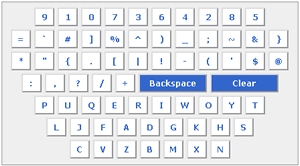 If you earned any interest from Treasury Bills or Savings Bonds last year, and are subject to local or state income taxes, be sure note it on your tax returns! Interest from federal debt obligations such as these are subject to federal tax, but not state or local income taxes. Here are some tips and examples to make sure you file correctly and get all the money that’s owed to you.
If you earned any interest from Treasury Bills or Savings Bonds last year, and are subject to local or state income taxes, be sure note it on your tax returns! Interest from federal debt obligations such as these are subject to federal tax, but not state or local income taxes. Here are some tips and examples to make sure you file correctly and get all the money that’s owed to you.
First of all, you have to manually go and print our your 1099-INT forms from TreasuryDirect.gov, if that’s how you bought or sold the securities. Go to Manage Direct > Manage My Taxes > Year. It’s not elegant, but at least they provide it… (You can also try calling 1-800-943-6864 to request one be sent to you.) On your federal return, there should be nothing specific to note as they are fully taxable at that level.
If you use online tax software for your state/local income taxes, look very carefully for a question that asks if you need to make any adjustments to your federal income numbers, or if you have any interest from government obligations or debt. If you go to an accountant and they don’t know how to do it – fire them 😉
To find out the applicable lines on the paper forms, first locate your appropriate state tax form in PDF format. It might be a good idea to start with the most general all-encompassing form. Then run a search in Adobe Acrobat for “bonds” or “subtractions” or “adjustments”. You are basically looking for the area where you make adjustments to the federal income figure. You may be referred to a supplemental form. Visually skim for keywords like government bonds, savings bonds, treasuries, or treasury bonds.
California Example
- I’ll start with Form 540 [pdf], the most general form.
- See per the Form 540 instructions that “If there are differences between your Federal and California income or deductions, complete Schedule CA (540) – California Adjustments
- Per the Schedule CA instructions: On line 8 enter in column B (Subtractions) any interest from U.S. Treasury bills, notes, and bonds (and also most U.S. Savings Bonds).
- Finish the schedule, transfer the appropriate value to line 14 of Form 540, and now your California taxable income should ignore any government debt interest.
Oregon Example
- I started with Form 40.
- In the “Subtractions” area, I see Line 16 – “Interest from U.S. government, such as Series EE, HH, and I bonds”. This is where I put in the interest from T-Bills as well.

 In my previous post on
In my previous post on 
 The Best Credit Card Bonus Offers – March 2024
The Best Credit Card Bonus Offers – March 2024 Big List of Free Stocks from Brokerage Apps
Big List of Free Stocks from Brokerage Apps Best Interest Rates on Cash - March 2024
Best Interest Rates on Cash - March 2024 Free Credit Scores x 3 + Free Credit Monitoring
Free Credit Scores x 3 + Free Credit Monitoring Best No Fee 0% APR Balance Transfer Offers
Best No Fee 0% APR Balance Transfer Offers Little-Known Cellular Data Plans That Can Save Big Money
Little-Known Cellular Data Plans That Can Save Big Money How To Haggle Your Cable or Direct TV Bill
How To Haggle Your Cable or Direct TV Bill Big List of Free Consumer Data Reports (Credit, Rent, Work)
Big List of Free Consumer Data Reports (Credit, Rent, Work)